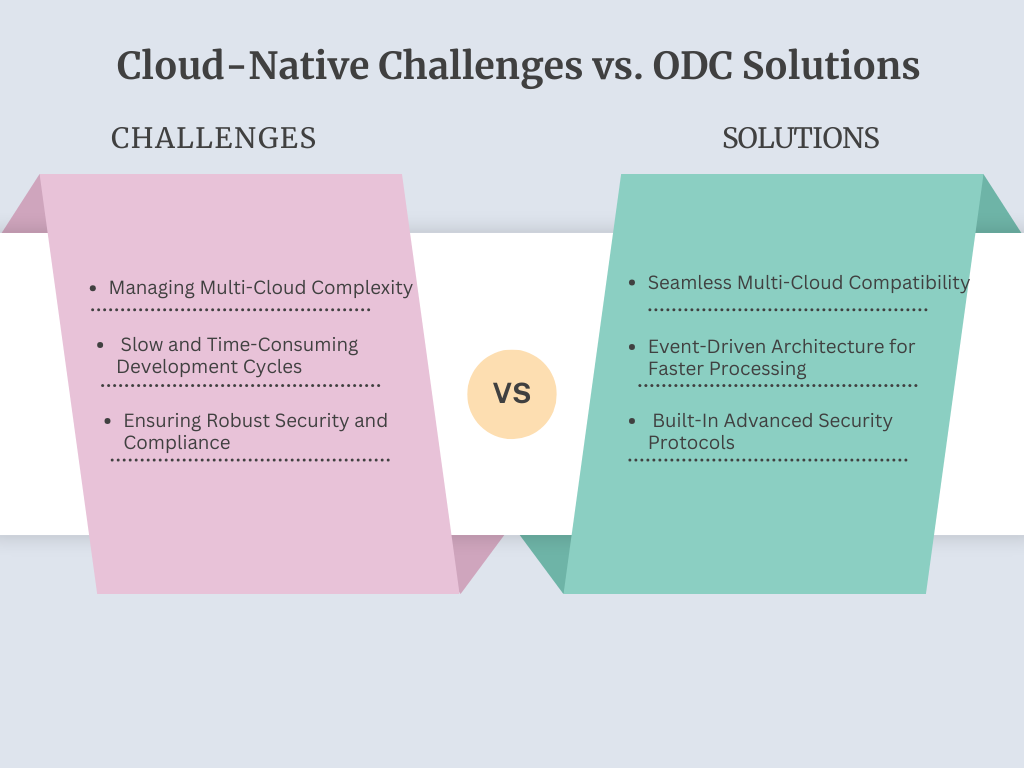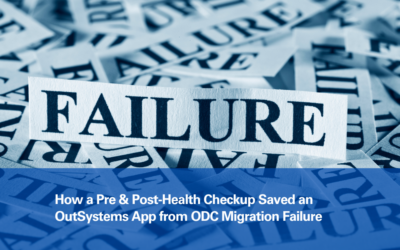Building cloud-native applications isn’t just a competitive advantage; it’s a necessity. Organizations face mounting pressure to meet rising user expectations, ensure global scalability, and adapt to the fast-paced technology landscape. This is where the OutSystems Developer Cloud (ODC) comes in—a transformative platform designed to tackle these challenges head-on.
Let’s explore how ODC simplifies cloud-native development, addresses modern application challenges, and sets a new standard for rapid, secure, and scalable app creation.
Addressing Cloud-Native Challenges with ODC
Developing cloud-native applications presents its own set of hurdles:
- Complexity in Multi-Cloud Environments: Managing resources, integrations, and scalability across multiple cloud platforms can be daunting.
- Time-Consuming Development Cycles: Traditional development methods often slow down the delivery of critical applications.
- Ensuring Security and Compliance: As applications grow, ensuring robust security and compliance with regulatory standards becomes increasingly challenging.

OutSystems Developer Cloud is designed to address these challenges with efficiency and innovation, empowering teams to build resilient applications faster than ever before.
Why ODC is a Game-Changer for Cloud-Native Development
OutSystems Developer Cloud offers a range of innovative features that redefine how applications are built and deployed in the cloud-native space. Here are the standout features:
- Platform and Runtime Separation: Enables seamless scalability and flexibility by decoupling application logic from runtime services.
- Multi-Cloud Compatibility: Build and deploy applications across major cloud providers like AWS, Azure, and Google Cloud with ease.
- Built-In Observability: Gain end-to-end visibility into application performance with integrated monitoring tools.
- Event-Driven Architecture: ODC’s support for event-driven systems ensures high responsiveness and real-time processing capabilities.
- State-of-the-Art Security: Advanced security protocols are embedded at every layer, ensuring applications remain secure and compliant.
These features position ODC as a future-proof solution for organizations looking to stay ahead in the competitive tech landscape.
OS11 vs. ODC: A Quick Comparison
For organizations already familiar with OutSystems 11, it’s crucial to understand how ODC differs. Here’s a side-by-side comparison:
| Feature | OutSystems 11 | OutSystems Developer Cloud |
|---|---|---|
| Architecture | Monolithic | Modular and Cloud-Native |
| Deployment Options | Limited | Multi-Cloud Support |
| Performance Monitoring | Basic | Advanced Observability |
| Scalability | Moderate | Seamless Horizontal Scaling |
| Security Features | Standard | Advanced and Granular |
ODC’s cloud-native foundation offers a clear advantage, particularly for enterprises aiming for scalability, flexibility, and rapid development cycles.
Key Benefits of ODC for Cloud-Native Applications
Seamless Integration: The platform’s ability to integrate effortlessly with existing systems ensures smooth transitions and reduces operational disruptions.
Enhanced Developer Productivity: With built-in tools and low-code capabilities, developers can focus on innovation rather than wrestling with technical debt.
Advanced Security: ODC integrates cutting-edge security features, ensuring compliance with global standards and protecting sensitive data.
Cost Efficiency: By leveraging multi-cloud capabilities and optimizing resources, ODC reduces infrastructure costs while boosting performance.
Strategic Application Development: ODC enables faster iterations and time-to-market, giving teams the agility to adapt to evolving user needs and business goals.
Taking the Next Step
OutSystems Developer Cloud offers a clear path to overcoming the challenges of cloud-native development while unlocking unparalleled benefits. Ready to transform your app development journey?







